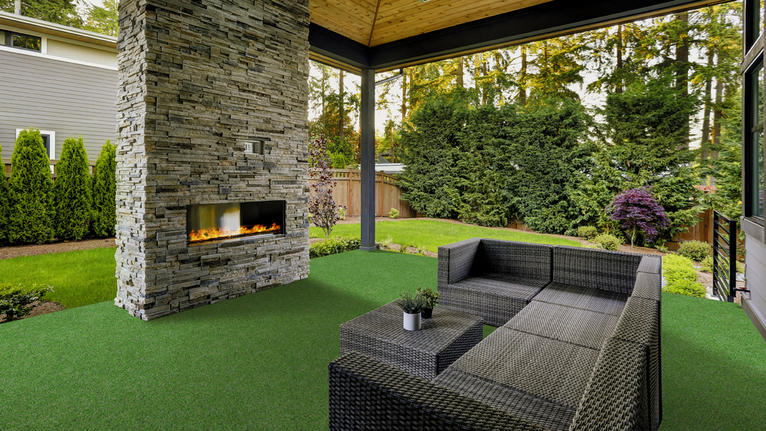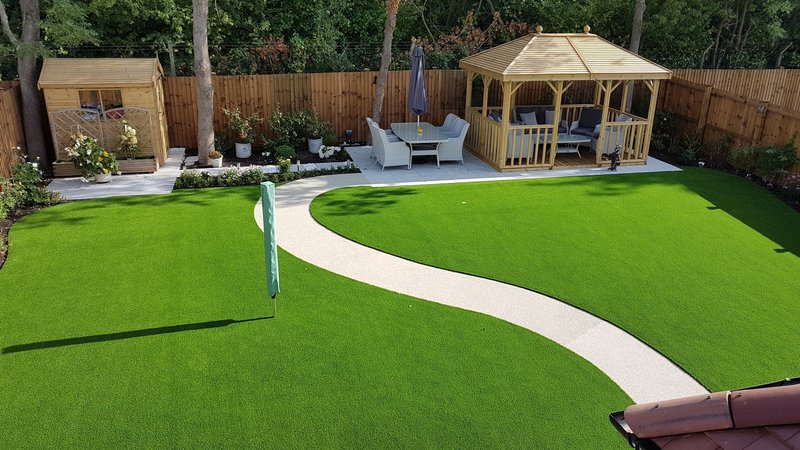Understanding Exactly How Synthetic Grass Functions for Your Home and Yard
Synthetic grass has emerged as a useful option for property owners looking for to boost their outside rooms without the worries of standard yard maintenance. Comprehending its make-up, installation process, and the numerous kinds available can expose substantial advantages for both aesthetic appeals and performance. However, the ramifications of picking synthetic grass prolong past plain look; they touch upon environmental considerations and lasting sustainability. As we discover these aspects, one must take into consideration how this innovative approach can essentially change the landscape of home horticulture. What factors should you evaluate prior to making the transition?
Benefits of Fabricated Grass
Acknowledging the growing appeal of man-made lawn, it is important to discover its numerous benefits. Among one of the most considerable benefits is the decrease in maintenance demands. Unlike natural grass, synthetic grass does not need watering, fertilization, or mowing, which translates to time and expense financial savings for homeowners. This low-maintenance choice is particularly attractive in regions with restricted water resources, as it saves water and decreases overall ecological effect (Mesa artificial grass).
In addition, synthetic grass gives a rich and consistently green look throughout the year, despite weather. This visual appeal boosts the visual top quality of any type of landscape, making it an attractive selection for houses. Man-made grass is long lasting and created to withstand hefty foot website traffic, making it an ideal option for family members with youngsters and pet dogs.
Safety is another important consideration; modern fabricated lawn is typically made from safe products and incorporates shock-absorbing technologies, decreasing the threat of injuries during play. Lastly, artificial turf is immune to insects and weeds, removing the requirement for chemical treatments, thus promoting a much healthier outdoor atmosphere. In general, the benefits of synthetic grass make it an engaging option for enhancing home and garden rooms.
Installment Process Review
When taking into consideration the installment of synthetic grass, an organized technique is necessary to guarantee optimum outcomes. The installment procedure normally starts with extensive site preparation, which includes clearing the area of any kind of existing turf, particles, and rocks. This step is important for developing a stable and level structure.
Next, it is essential to analyze the drainage capacities of the area. Appropriate water drainage is important to prevent water merging on the surface, which can lead to early wear or concerns with mold. If required., this may call for excavation and the installment of a drainage system.
When the site is prepared, a base layer is set up, typically containing crushed rock or decomposed granite, compressed to develop a solid surface area. After attaining a smooth base, a geotextile fabric is set to inhibit weed development.
The final phase includes laying the synthetic grass itself. The lawn rolls are placed, reduced to fit, and safeguarded at the seams using adhesive or specific lawn tape. Infill materials might be applied to boost security and improve the general appearance. Appropriately adhering to these steps will result in a durable and visually pleasing fabricated grass installment.
Kinds Of Man-made Grass

One of the primary categories is household turf, which is usually used in gardens, backyards, and play locations. Industrial grass, on the various other hand, is engineered for high-traffic areas, such as sporting activities fields and metropolitan parks.
An additional category includes landscape lawn, which simulates natural grass very closely to enhance the visual charm of yards and exterior spaces. Furthermore, putting green turf is specifically made for golf lovers, featuring a shorter heap height and a smooth surface for an ideal placing experience.
Last but not least, pet-friendly grass incorporates antimicrobial homes and sturdy products to make certain a secure and hygienic content atmosphere for pet dogs. Selecting the best type of synthetic grass is important for attaining the intended look and functionality in your house and garden.
Maintenance Demands
Correct maintenance is vital for expanding the life-span and look of man-made lawn. Normal upkeep not just boosts aesthetic charm yet also makes sure ideal performance. The key upkeep jobs include brushing, rinsing, and evaluating the turf.

Washing the turf with water assists remove pet, dust, and debris waste. Using a tube with a spray nozzle makes this task effective and efficient. In areas prone to heavy rains, make certain proper drainage to avoid merging.
Additionally, regular inspections for problems, such as splits or loosened joints, are critical. Prompt repairs can avert much more considerable issues and maintain the integrity of the turf. browse around this web-site By adhering to these maintenance requirements, house owners can enjoy the charm and performance of their synthetic grass for several years ahead, making sure a lively and welcoming outdoor space.
Ecological Factors To Consider
Artificial lawn offers a complicated variety of environmental considerations that require mindful examination. Artificial turf companies. While it decreases the demand for water, plant foods, and chemicals, which are normally connected with all-natural turf maintenance, there are significant problems regarding its manufacturing, disposal, and use
The manufacturing of synthetic grass entails petroleum-based products, questioning regarding nonrenewable fuel source consumption and greenhouse gas emissions. Moreover, the setup procedure typically requires a layer of infill, frequently composed of products like crumb rubber, which can release harmful chemicals right into the atmosphere.

Disposal of synthetic grass presents an additional obstacle, as it is not biodegradable and can add to land fill waste. Some recycling choices exist, but they are not commonly available or easily accessible.
Final Thought
In summary, synthetic grass presents many advantages for domestic and garden applications, including visual charm, reduced upkeep, and security for family pets and kids. The installation process requires cautious factor to consider of drainage, base materials, and grass positioning to guarantee longevity and efficiency. Different kinds of man-made grass cater to different needs and choices, while environmental factors to consider highlight its possible sustainability benefits. On the whole, synthetic lawn serves as a functional and attractive alternative to natural yard in exterior rooms.
In general, the benefits of synthetic turf make it a compelling alternative for improving home and yard areas.
When taking into consideration the installation of man-made grass, a methodical strategy is vital to make sure optimal outcomes. The lawn rolls are placed, cut to fit, and secured at the joints using sticky or specific grass tape. Properly adhering to these steps will result in a sturdy and visually pleasing man-made grass setup.
In summary, man-made grass provides countless benefits for property and garden applications, including visual allure, reduced maintenance, and security for kids and animals.